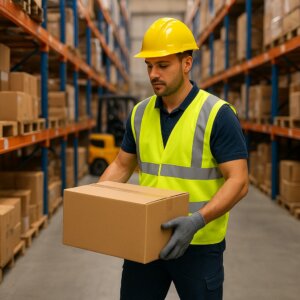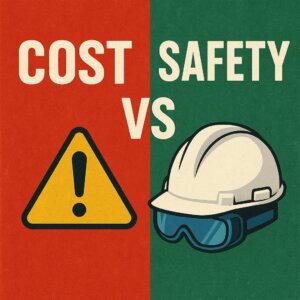Introduction
At first glance, logistics warehouses may seem safer than construction sites or manufacturing plants. After all, most of the work happens indoors, away from heavy machinery and harsh weather. But the truth is: hidden risks in warehouses can be just as dangerous if not managed properly. From slips and trips to exposure to noise and moving equipment, workers face multiple hazards every day. That’s why choosing the right Personal Protective Equipment (PPE) is not just a legal requirement—it’s a crucial step toward protecting people and ensuring smooth operations.
Hidden Risks in Warehouses
-
Moving Equipment – Forklifts, pallet jacks, and conveyor belts are always on the move. A single distraction can lead to serious accidents.
-
Slips, Trips, and Falls – Spilled liquids, packaging debris, and uneven flooring can cause injuries that keep workers off the job.
-
Falling Objects – Items stacked on high racks can shift and fall unexpectedly, especially during loading and unloading.
-
Noise Exposure – Continuous movement of machines and alarms may damage hearing over time.
-
Chemical and Dust Exposure – Cleaning agents, packaging chemicals, or fine dust from goods can irritate skin, eyes, or lungs.
-
Temperature Extremes – Workers in cold storage or hot loading docks face additional stress on their bodies.
Essential PPE for Logistics Warehouses
To address these hidden risks, here’s the PPE every logistics operation should consider:
-
Safety Helmets / Hard Hats – Protection against falling objects or accidental bumps in narrow aisles.
-
High-Visibility Clothing – Reflective vests or jackets ensure workers are seen by forklift drivers and other operators.
-
Safety Shoes – Steel-toe or composite-toe footwear protects against falling boxes and provides slip resistance.
-
Gloves – Depending on the task, cut-resistant, anti-slip, or thermal gloves are vital for handling goods safely.
-
Hearing Protection – Earplugs or earmuffs reduce long-term hearing damage in noisy environments.
-
Eye Protection – Safety glasses or goggles guard against dust, splinters, or unexpected chemical splashes.
-
Respiratory Protection – Masks or respirators are important when working around dust, fumes, or cleaning agents.
-
Cold/Heat Protective Gear – Insulated jackets, cooling vests, or breathable fabrics for workers in extreme temperature areas.
Beyond PPE: Building a Safety Culture
PPE is the last line of defense, but it should not stand alone. Regular safety training, clear warehouse signage, equipment maintenance, and proper storage methods all reduce risks significantly. When combined with a culture where workers actively look out for one another, PPE becomes part of a larger safety system.
Conclusion
The logistics industry often focuses on speed and efficiency—but without the right PPE, safety takes a back seat. By identifying hidden risks and equipping your team with the correct protective gear, businesses not only prevent injuries but also create a workplace where employees feel secure and valued.
Call-to-Action:
Looking to equip your warehouse team with reliable PPE? Explore our full range of safety gear designed for logistics and supply chain operations.








